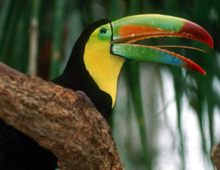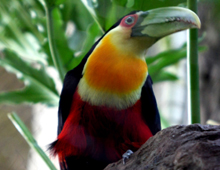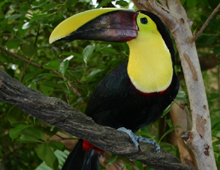
Also known as the Rainbow-billed or Sulfur-breasted toucan, it is popular for its resemblance to “Toucan Sam™”, the “Froot Loops®” mascot. The northernmost of the large toucans, it ranges from the Mexican state of San Louis Potosi south to Colombia and Venezuela. Much habitat has been lost to agriculture. Though first hatched in captivity at the Houston Zoo, in 1974, it has not bred consistently in collections. The DWA is involved in a captive breeding consortium for this species involving both private collections and public zoos.






